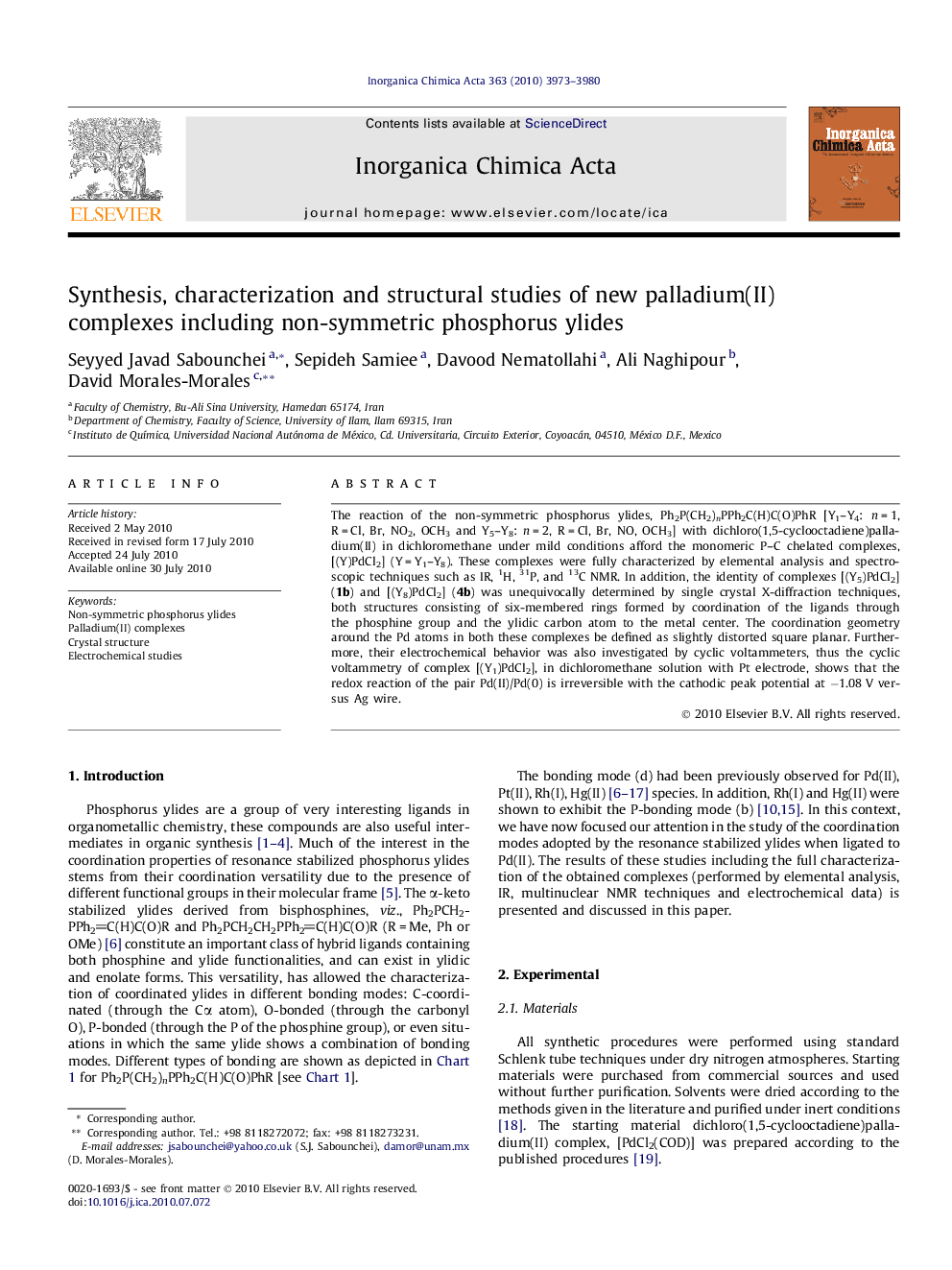| Article ID | Journal | Published Year | Pages | File Type |
|---|---|---|---|---|
| 1307875 | Inorganica Chimica Acta | 2010 | 8 Pages |
The reaction of the non-symmetric phosphorus ylides, Ph2P(CH2)nPPh2C(H)C(O)PhR [Y1–Y4: n = 1, R = Cl, Br, NO2, OCH3 and Y5–Y8: n = 2, R = Cl, Br, NO, OCH3] with dichloro(1,5-cyclooctadiene)palladium(II) in dichloromethane under mild conditions afford the monomeric P–C chelated complexes, [(Y)PdCl2] (Y = Y1–Y8). These complexes were fully characterized by elemental analysis and spectroscopic techniques such as IR, 1H, 31P, and 13C NMR. In addition, the identity of complexes [(Y5)PdCl2] (1b) and [(Y8)PdCl2] (4b) was unequivocally determined by single crystal X-diffraction techniques, both structures consisting of six-membered rings formed by coordination of the ligands through the phosphine group and the ylidic carbon atom to the metal center. The coordination geometry around the Pd atoms in both these complexes be defined as slightly distorted square planar. Furthermore, their electrochemical behavior was also investigated by cyclic voltammeters, thus the cyclic voltammetry of complex [(Y1)PdCl2], in dichloromethane solution with Pt electrode, shows that the redox reaction of the pair Pd(II)/Pd(0) is irreversible with the cathodic peak potential at −1.08 V versus Ag wire.
Graphical abstractThe stoichiometric reaction of the non-symmetric phosphorus ylides, Ph2P(CH2)nPPh2C(H)C(O)PhR [Y1–Y4: n = 1, R = Cl, Br, NO2, OCH3 and Y5–Y8: n = 2, R = Cl, Br, NO, OCH3] with [PdCl2(COD)] in dichloromethane afforded P–C coordinated mononuclear complexes. Their electrochemical behavior was investigated by cyclic voltammetry.Figure optionsDownload full-size imageDownload as PowerPoint slide
